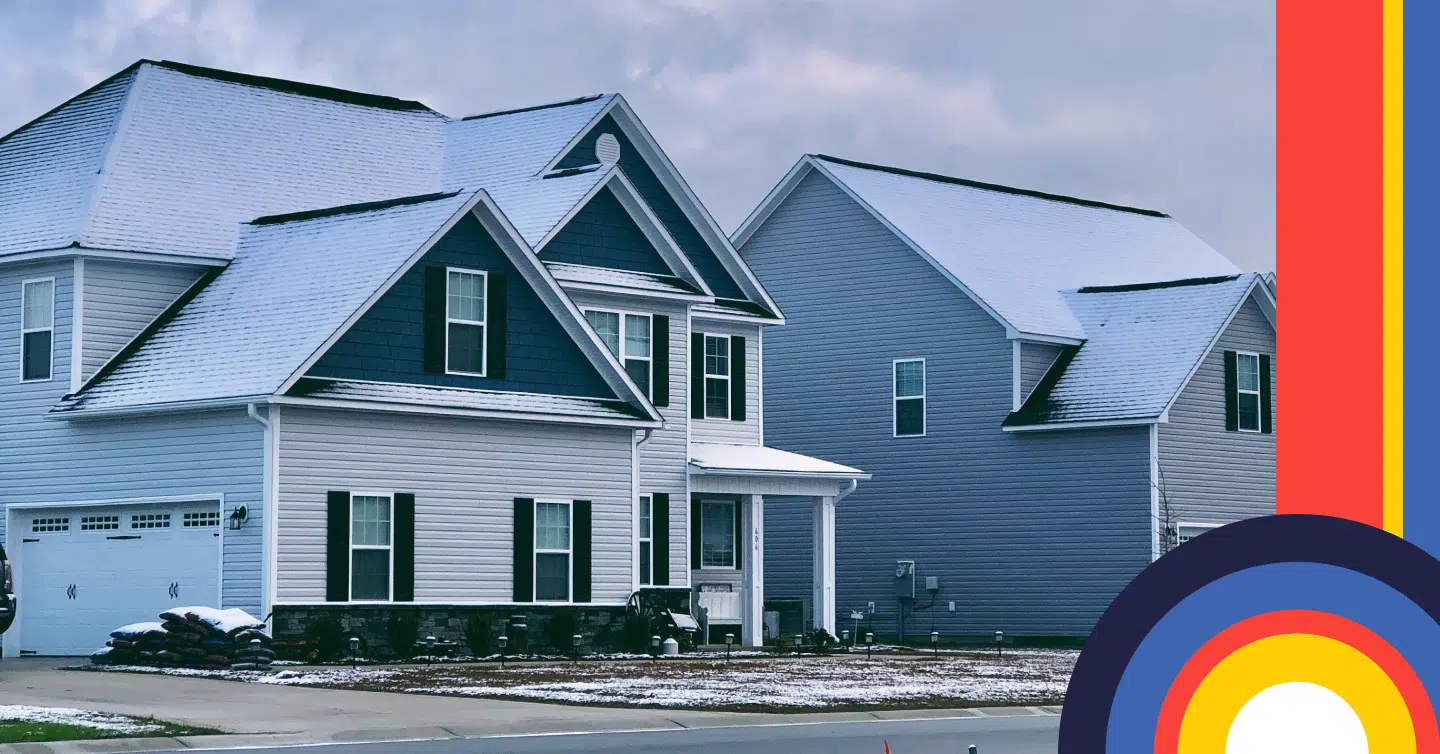What Is a Private Mortgage?

Mortgages have become increasingly harder to secure due to rising rates and tightening borrowing rules, as federally regulated lenders apply more rigorous qualification criteria, like the stress test. Due to the strict lending criteria for traditional mortgages, many Canadians are turning to private mortgages, which are becoming increasingly popular as an alternative to conventional financing.
With private lending growing rapidly, especially in major urban centres, it’s important to understand how these mortgages work, when they’re appropriate, and what risks they carry. Here’s the fundamentals you need to know about private mortgages in Canada, what lenders look for, and why regulatory bodies are paying closer attention to this quickly evolving segment of the mortgage market.
Key Takeaways
- Private mortgages offer short-term flexibility but come with high costs.
- Strong equity alone no longer guarantees approval, and most private lenders require a viable exit plan.
- Regulatory bodies like FSRA are closely monitoring the private mortgage space due to rising consumer risk.
How Private Mortgages Work
A private mortgage is a loan funded by individuals (syndicates), private corporations, or mortgage investment corporations (MICs) rather than banks or credit unions. Instead of relying heavily on your income, credit score, or employment history, private lenders focus primarily on the property’s value as collateral.
Private mortgages are typically short-term, from 3 to 24 months, and are interest-only, meaning borrowers are not required to make principal payments during the mortgage term. This lowers monthly mortgage payments but means the entire loan amount is due at the end of the term. Because of the increased risk to private lenders, interest rates are significantly higher than those of other lending solutions.
Why Some Borrowers Turn to Private Mortgages
Borrowers turn to private mortgages for various reasons: they may need fast access to funds, have non-traditional income, poor credit history, or are purchasing a property that falls outside prime lending guidelines.
Some self-employed borrowers may have fluctuating incomes or difficulty proving earnings, making qualifying for A and B lending harder. Others may be recovering from credit issues, over-leveraged or carrying existing debts that disqualify them.
Private mortgages provide short-term flexibility with the expectation that the borrower will improve their financial profile or the property’s condition before transitioning to a conventional loan. While private lending can provide crucial flexibility in time-sensitive or complex situations, a well-planned exit strategy is essential to avoid costly renewals or financial strain.
Private mortgages are often used when:
- Borrowers are declined by A or B lenders.
- Income is hard to document (e.g., self-employed, foreign or variable income).
- Credit issues prevent qualification under the stress test.
- The property is unconventional or under renovation.
- Fast closing is required.
How to Get Approved for a Private Mortgage
While traditional lenders heavily rely on credit scores, income verification, and debt service ratios, private lenders prioritize the property’s equity and the deal’s overall risk profile. That means the focus shifts toward the loan-to-value (LTV) ratio, the property type and location, and your exit strategy.
Loan-To-Value Ratio (LTV)
The loan-to-value ratio (LTV) is one of the most critical factors private lenders consider when reviewing your mortgage application. The more equity you have in the home, the better your chances of approval. Most private lenders will lend up to 75% to 80% LTV, depending on the property. This means you need at least 20% to 25% equity in the property.
Property Zoning and Location
Private lenders carefully assess a property’s zoning and location because these factors directly impact its marketability and resale value. Properties in urban or suburban areas with established infrastructure and steady demand are more attractive to private lenders than those in remote or rural locations. The better-located the property, the more likely a private lender is to approve the loan.
Assets, Income Stability, and Ability to Carry Payments
Even though private lenders are more flexible in their qualifying criteria, they still want assurance that you can afford the mortgage payments. This means showing enough liquid assets and/or income, whether from employment, self-employment, pensions, or rental sources, to support the interest-only payments.
While the income verification process may be less stringent, lenders will still evaluate your overall financial picture, including savings, investments, or other assets that can be used as a financial cushion. This helps build confidence that you won’t fall behind on payments, even in a higher-risk lending scenario.
Exit Strategy
The most important part of any private mortgage is your exit plan. Since these loans are short-term, typically 3 to 24 months, lenders need reassurance that you’ll be able to repay the loan in full at the end of the term. This could mean refinancing with a traditional lender, selling the property, or using proceeds from another source, like your assets. Without an exit strategy, even a strong equity position may not be enough to get approved.
Pros and Cons of Private Mortgages
While private mortgages can offer much-needed flexibility for borrowers, they also come with higher costs and stricter repayment timelines. Understanding the pros and cons can help determine whether private lending is a strategic short-term solution for your needs or a financial risk.
Pros
- Faster approval.
- Easier qualification for borrowers with bruised credit or non-traditional income.
- More flexible lending criteria.
- Ideal for unconventional properties.
- Can help bridge short-term gaps or fund renovations.
Cons
- Interest rates are significantly higher.
- Additional fees may apply.
- Shorter terms may require refinancing or repayment.
- The risk of having a renewal denied.
- A failed exit strategy can lead to financial hardship or forced sale.
- Limited consumer protections compared to federally regulated lenders.
Regulatory Changes and Growing Scrutiny
The Financial Services Regulatory Authority (FSRA) has highlighted some significant risks in the private lending sector. The Private Residential Mortgage Lending in Ontario Report 2023 flagged that 43% of those who used private lending did not have an exit strategy to transition back to a traditional mortgage.
In response to the growing trend of borrowers turning to private lending, FSRA implemented initiatives to help protect borrowers, including new enhanced licensing requirements for mortgage brokers and agents who wish to transact in private mortgages.
In addition, FSRA, with the Mortgage Broker Regulators’ Council of Canada (MBRCC), has developed guidance designed to ensure borrowers receive mortgage recommendations that best align with their financial needs, risk tolerance, and repayment ability. This framework helps protect consumers by requiring mortgage professionals to assess whether the mortgage is appropriate for the borrower’s needs and circumstances before presenting it as a viable option.
Frequently Asked Questions
Are private mortgage rates higher than bank rates?
Private mortgage rates are typically much higher than those of banks because private loans carry greater risk and shorter mortgage terms. Borrowers may also pay additional fees, which can quickly add to the overall cost.
How much equity do I need for a private mortgage?
Most private lenders require at least 20 to 25% equity, depending on the property and market.
Are private mortgage rates negotiable?
Some flexibility exists when negotiating private mortgage rates depending on the LTV ratio and overall borrower profile. While rates are higher than traditional loans, rates can vary significantly depending on your location, property type, and the strength of your exit strategy. However, it’s wise to consider the total cost of borrowing (COB) when comparing multiple mortgage options to understand the full costs involved.
Final Thoughts
When used strategically, private mortgages can be a beneficial alternative when traditional financing isn’t an option. With higher costs, shorter terms, and fewer consumer protections, these loans require careful planning and a clear exit strategy. Whether you’re self-employed or recovering from credit issues, a private mortgage can be a viable short-term solution while you work toward a longer-term strategy.
For a personalized mortgage strategy tailored to today’s evolving market, contact nesto mortgage experts today.
Why Choose nesto
At nesto, our commission-free mortgage experts, certified in multiple provinces, provide exceptional advice and service that exceeds industry standards. Our mortgage experts are salaried employees who provide impartial guidance on mortgage options tailored to your needs and are evaluated based on client satisfaction and the quality of their advice. nesto aims to transform the mortgage industry by providing honest advice and competitive rates through a 100% digital, transparent, and seamless process.
nesto is on a mission to offer a positive, empowering and transparent property financing experience – simplified from start to finish.
Contact our licensed and knowledgeable mortgage experts to find your best mortgage rate in Canada.
Ready to get started?
In just a few clicks, you can see our current rates. Then apply for your mortgage online in minutes!



